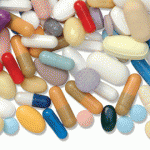
Numstocker / shutterstock.com
A recent analysis of the monoclonal antibody epratuzumab finds new evidence for its effectiveness in a subset of systemic lupus erythematosus (SLE) patients who have a concurrent diagnosis of Sjögren’s syndrome, a progressive autoimmune disease that affects exocrine glands and is characterized by dry eyes and mouth.1 Sjögren’s can be primary, meaning independent of other conditions, or associated with coexisting autoimmune diseases, such as SLE. An estimated 6.5–19% of SLE patients will develop an associated Sjögren’s diagnosis.2
A multinational European and U.S. team, supported by UCB Pharma and led by Jacques-Eric Gottenberg, MD, PhD, professor and hospital practitioner at Strasbourg University Hospital in France, conducted a post-hoc analysis of data from the Epratuzumab versus Placebo in Subjects with Moderate to Severe General Systemic Lupus Erythematosus (EMBODY 1 and 2) study, two matched clinical trials of the efficacy and safety of epratuzumab. The new study compared patients with SLE and Sjögren’s with controls who had SLE but no evidence of Sjögren’s to see if epratuzumab had a different clinical efficacy profile in the two groups.
Epratuzumab is a humanized monoclonal antibody that targets the B cell-specific protein CD-22, an antigen receptor on the surface of B cells, resulting in selective modulation of their activity. EMBODY 1 and 2 trials were phase 3, randomized, double-blind, placebo-controlled, multicenter studies, with a total of 1,584 enrolled SLE patients.3 After promising results for the drug from the phase 2B EMBLEM trial, which found improvement in disease activity for patients with moderate to severe SLE, it was thought that epratuzumab could diminish SLE-related hyperactivity of B cells without depleting them.4 But the EMBODY trials failed to achieve their clinical efficacy endpoints.
For patients with moderate or severe, active SLE, treatment with epratuzumab plus standard therapy failed to result in statistically significant improvements in treatment response rates over the placebo plus standard therapy group at 48 weeks, even though it was well tolerated, had few adverse events and showed a 30–40% reduction in the number of B cells in peripheral blood and a reduction in B cell activity.
The disappointing EMBODY results were announced in 2015 at the ACR/ARHP Annual Meeting and other places.5 In response, the Lupus Foundation of America issued a press release emphasizing the disease’s heterogeneity, differences between patients and even in the same patient from day to day, and the resulting difficulty of demonstrating the impact of a drug on SLE in clinical trials. The foundation stated, “Patients cannot afford to wait another half century for a new lupus treatment,” referring to the approval of belimumab in 2011.6

